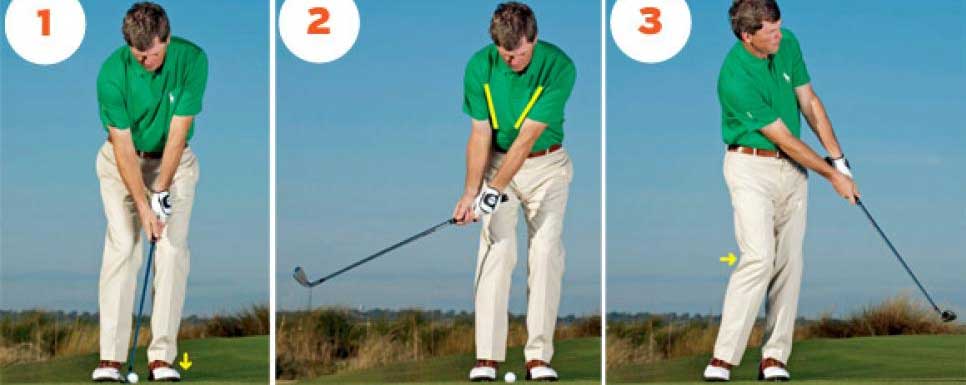CHIPPING – “SWING BACK, TURN THROUGH”
By Greg Schulze
The chip shot may be golf’s most important shot for most amateurs to understand and develop.
It’s golf’s smallest shot which requires the ball to get airborne correctly. All longer swings could be considered “add-ons” to chipping. Here is your chance to learn the laws which govern the ball getting airborne, or risk becoming a dreaded “scooper” who tries to lift and ‘help” the ball into the air… a damaging belief.
Learning theory has long accepted that there are 4 stages of learning and the second is called “triggering.” Triggering is how the brain sends signals or messages to the body. Much learning research suggests that JINGLES can be the most “powerful” triggers. Product advertising, radio ads, movie trailers, etc. use them as “reminder triggers”, and as we have all experienced, can get “stuck” in your head. Wouldn’t it be awesome if you “installed” an accurate jingle (“approved” by your PGA Professional), giving you the confidence that every chip swing is focusing on the proper message?
The unique set-up for the chip shot:
- Hold the club near the bottom of the handle.
- Place your feet relatively close together, training the brain to match the expected low-energy swing.
- Lean your body centerline (upper sternum) forward, “Lean towards the green.” (Be consistent with this, and don’t overdo it).
- Allow the club handle to lean forward with the body lean so that the butt end of the handle points to the lead hip.
- Heighten your awareness of the “y” now formed by the arms and shaft.
- (Optional) positioning of the lower body (feet and hips) in an “open” position (aimed slightly left for the right-handed player)
Now, the golfer must decide what are the fewest moving parts to use for an effective and efficient chip shot. I believe the jingle “SWING BACK, TURN THROUGH” could accomplish this goal. While maintaining the “lean towards the green”, the backswing should only consist of the swinging of the arms with a matching upward hinging of the wrists to elevate the clubhead (SWING BACK). The downswing-into-impact should feel as if the hip turn moves the clubhead through impact (TURN THROUGH). This simple in-your-head jingle will allow the bigger muscles to govern the pace and energy of the clubhead through impact and with practice will create amazing distance control.
SWING BACK, TURN THROUGH… Can you see it in the images?



